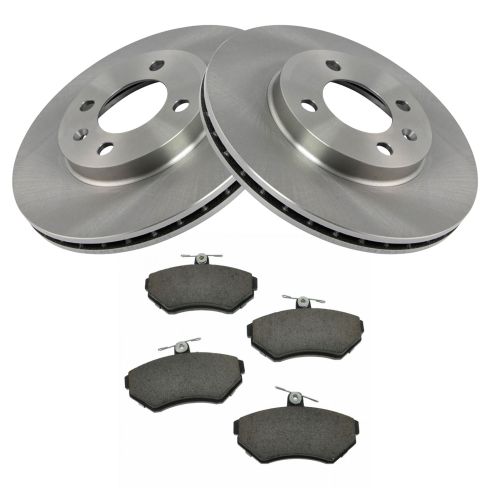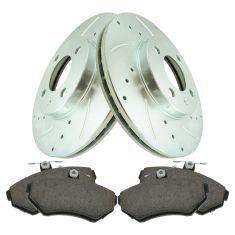1ABFS01243-VW Cabrio Golf Jetta Passat Front Ceramic Brake Pad & Rotor Kit TRQ BKA11081

Replaces
2000 VW Cabrio Front Ceramic Brake Pad & Rotor Kit TRQ BKA11081

Product Reviews
Loading reviews
3.67/ 5.0
3
3 reviews
1A Auto brakes are great!!
October 12, 2019
I love the parts and I love the videos!
Perfect
January 16, 2021
Great products, shipped quickly, always happy with the service here
Tons of brake dust and squeak like theyre 60K old
May 6, 2021
Just installed these brakes on my 96 Jetta and theyre horrible. TRQ branded and less than a week after install they were chirping and squeaking. The lubricant provided was sub par, going to try using some premium brake grease and see if that helps, but I might be in more money to resurface the rotors and replace the pads. Would NOT recommend!
Customer Q&A
No questions have been asked about this item.
Volkswagen is a registered trademark of Volkswagen AG. 1A Auto is not affiliated with or sponsored by Volkswagen or Volkswagen AG.
See all trademarks.










